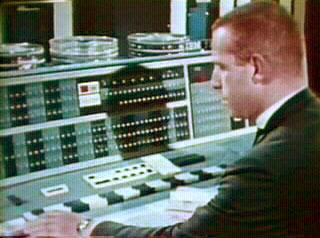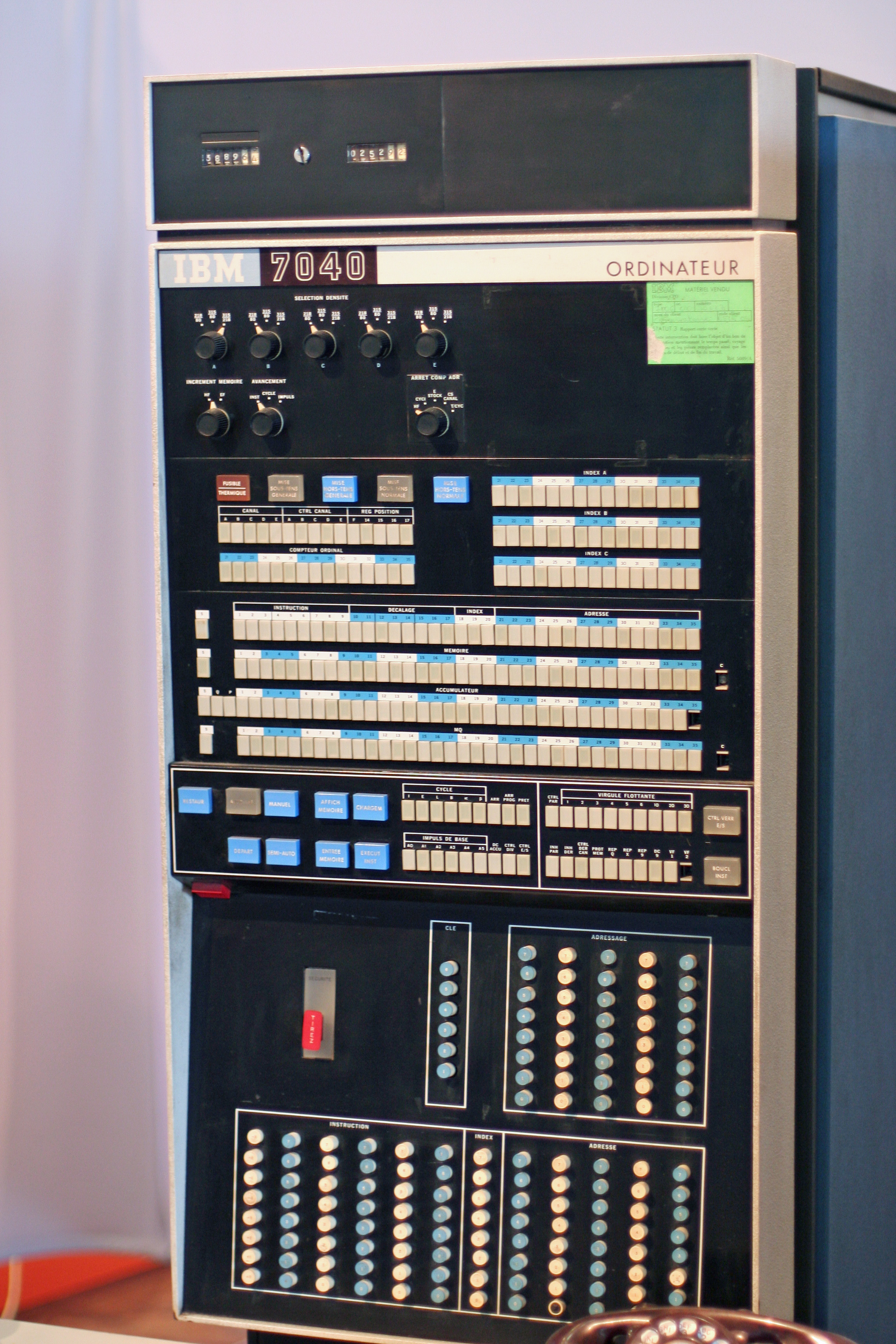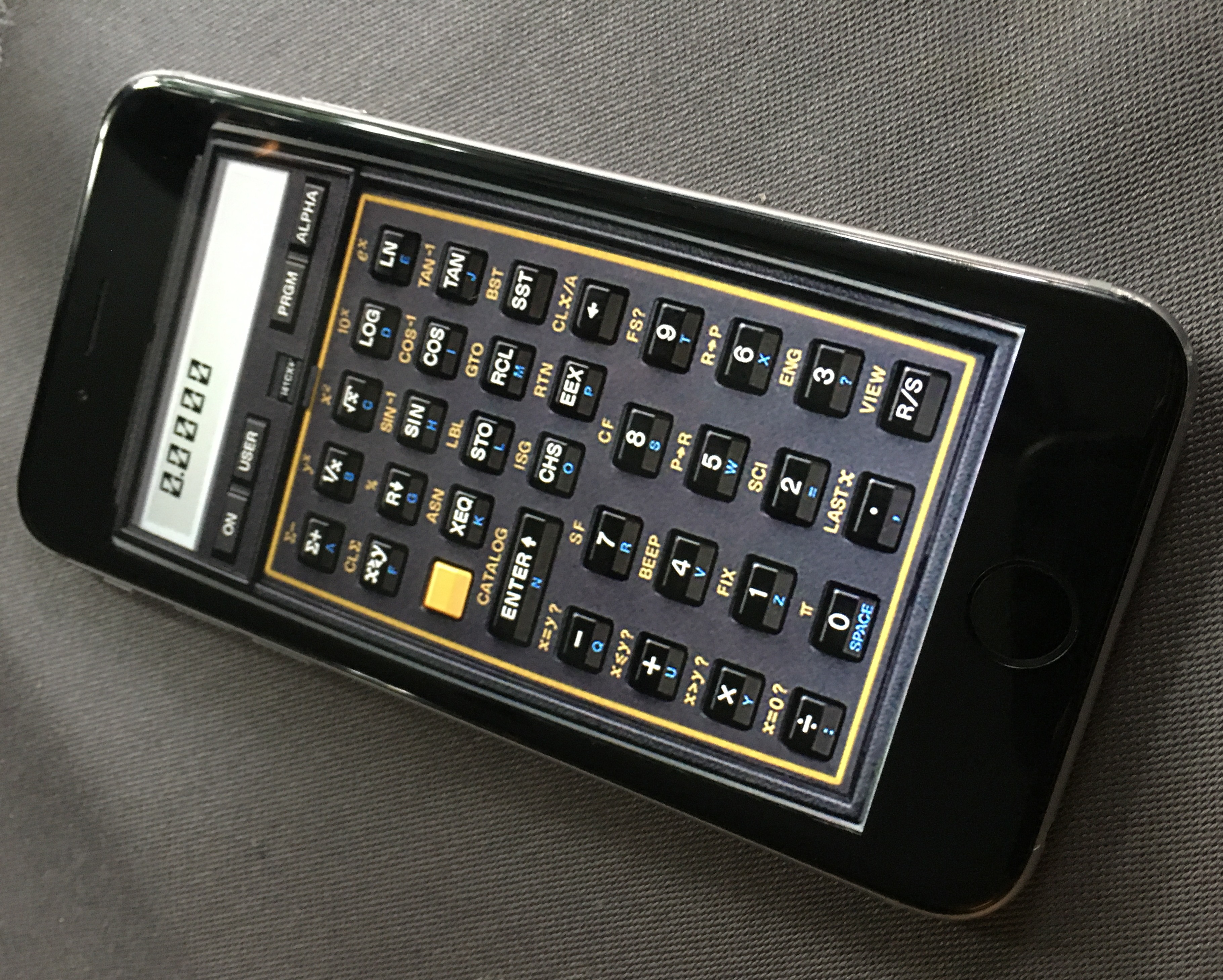|
IBM 3165
The IBM System/370 Model 165 (and the Model 155) were jointly announced June 30, 1970 as "designed for ... the Seventies." That same day IBM announced the 370/195. They were the first three models of the IBM System/370 line of computers. Three months later a fourth IBM System/370, the Model 145, was announced. Since none of them came with virtual memory, "which was to be a hallmark of the 370 line" some said about these early members of the IBM System/370 family, especially about the 165 & 155, that they were not "the real 370 line."The 195 was noted as "at the time of its introduction, ... IBM's most powerful computing system" and the 145's microcode could be upgraded from a floppy disk. By contrast, the 155 & 165 needed a hardware addition priced at $200,000 and $400,000 respectively Growth path The initially announced System/370 Models 165 & 155 systems were in many ways merely improved IBM System/360 systems. * Both were announced to "run under proven OS programming su ... [...More Info...] [...Related Items...] OR: [Wikipedia] [Google] [Baidu] |
System/370
The IBM System/370 (S/370) is a model range of IBM mainframe computers announced on June 30, 1970, as the successors to the System/360 family. The series mostly maintains backward compatibility with the S/360, allowing an easy migration path for customers; this, plus improved performance, were the dominant themes of the product announcement. In September 1990, the System/370 line was replaced with the System/390. Evolution The original System/370 line was announced on June 30, 1970, with first customer shipment of the Models 155 and 165 planned for February 1971 and April 1971 respectively. The 155 first shipped in January 1971. System/370 underwent several architectural improvements during its roughly 20-year lifetime. The following features mentioned in Principles of Operation are either optional on S/360 but standard on S/370, introduced with S/370 or added to S/370 after announcement. *Branch and Save *Channel Indirect Data Addressing *Channel-Set Switching *Clear I/O *C ... [...More Info...] [...Related Items...] OR: [Wikipedia] [Google] [Baidu] |
IBM 2075
The IBM System/360 Model 75 is a discontinued high end/high performance system that was introduced on April 22, 1965. Although it played many roles in IBM's System/360 lineup, it accounted for a small fraction of a percent of the 360 systems sold.An ADP Newsletter cited on page 56 in says (re S/360) "75-91 .. 0.1%" Five Model 75 computers housed at NASA's Real Time Computer Complex were used during the Apollo program. Models Three models, the H75, I75, and J75, were respectively configured with one, two, or four IBM 2365 The IBM 2365 Processor Storage is a magnetic-core memory storage unit that is a component of the IBM System/360 models 65, 67, 75 and 85 computers, which were released between 1965 and 1968. Storage is implemented using magnetic cores with a ... Model 3 Processor Storage units, each of which provided 262,144 (256K) bytes of core memory, so that the H75 had 262,144 (256K) bytes of core, the I75 had 524,288 (512K), and the J75 1,048,576 (1 MB). Per ... [...More Info...] [...Related Items...] OR: [Wikipedia] [Google] [Baidu] |
List Of IBM Products
The following is a partial list of products, services, and subsidiaries of International Business Machines (IBM) Corporation and its predecessor corporations, beginning in the 1890s. This list is eclectic; it includes, for example, the '' AN/FSQ-7'', which was not a product in the sense of ''offered for sale'', but was a product in the sense of ''manufactured—produced by the labor of IBM''. Several machines manufactured for the Astronomical Computing Bureau at Columbia University are included, as are some machines built only as demonstrations of IBM technology. Missing are many RPQs, OEM products (semiconductors, for example), and supplies (punched cards, for example). These products and others are missing simply because no one has added them. IBM sometimes uses the same number for a system and for the principal component of that system. For example, the IBM 604 Calculating Unit is a component of the IBM 604 Calculating Punch. And different IBM divisions used the same mo ... [...More Info...] [...Related Items...] OR: [Wikipedia] [Google] [Baidu] |
Cache Memory
In computing, a cache ( ) is a hardware or software component that stores data so that future requests for that data can be served faster; the data stored in a cache might be the result of an earlier computation or a copy of data stored elsewhere. A ''cache hit'' occurs when the requested data can be found in a cache, while a ''cache miss'' occurs when it cannot. Cache hits are served by reading data from the cache, which is faster than recomputing a result or reading from a slower data store; thus, the more requests that can be served from the cache, the faster the system performs. To be cost-effective and to enable efficient use of data, caches must be relatively small. Nevertheless, caches have proven themselves in many areas of computing, because typical computer applications access data with a high degree of locality of reference. Such access patterns exhibit temporal locality, where data is requested that has been recently requested already, and spatial locality, where d ... [...More Info...] [...Related Items...] OR: [Wikipedia] [Google] [Baidu] |
IBM 7094
The IBM 7090 is a second-generation transistorized version of the earlier IBM 709 vacuum tube mainframe computer that was designed for "large-scale scientific and technological applications". The 7090 is the fourth member of the IBM 700/7000 series scientific computers. The first 7090 installation was in December 1959. In 1960, a typical system sold for $2.9 million (equivalent to $ million in ) or could be rented for $63,500 a month (). The 7090 uses a 36-bit word length, with an address space of 32,768 words (15-bit addresses). It operates with a basic memory cycle of 2.18 μs, using the IBM 7302 Core Storage core memory technology from the IBM 7030 (Stretch) project. With a processing speed of around 100 Kflop/s, the 7090 is six times faster than the 709, and could be rented for half the price. An upgraded version, the 7094 was up to twice as fast. Both the 7090 and the 7094 were withdrawn from sale on July 14, 1969, but systems remained in service for more than a ... [...More Info...] [...Related Items...] OR: [Wikipedia] [Google] [Baidu] |
IBM 7044
The IBM 7040 was a historic but short-lived model of transistor computer built in the 1960s. History It was announced by IBM in December 1961, but did not ship until April 1963. A later member of the IBM 700/7000 series of scientific computers, it was a scaled-down version of the IBM 7090. It was not fully compatible with the 7090. Some 7090 features, including index registers, character instructions and floating point, were extra-cost options. It also featured a different input/output architecture, based on the IBM 1414 data synchronizer, allowing more modern IBM peripherals to be used. A model designed to be compatible with the 7040 with more performance was announced as the 7044 at the same time. Peter Fagg headed the development of the 7040 under executive Bob O. Evans. A number of IBM 7040 and 7044 computers were shipped, but it was eventually made obsolete by the IBM System/360 family, announced in 1964. The schedule delays caused by IBM's multiple incompatible architect ... [...More Info...] [...Related Items...] OR: [Wikipedia] [Google] [Baidu] |
IBM 709
The IBM 709 was a computer system, initially announced by IBM in January 1957 and first installed during August 1958. The 709 was an improved version of its predecessor, the IBM 704, and was the third of the IBM 700/7000 series of scientific computers. The improvements included overlapped input/output, indirect addressing, and three "convert" instructions which provided support for decimal arithmetic, leading zero suppression, and several other operations. The 709 had 32,768 words of 36-bit magnetic core memory and could execute 42,000 add or subtract instructions per second. It could multiply two 36-bit integers at a rate of 5000 per second. An optional hardware emulator executed old IBM 704 programs on the IBM 709. This was the first commercially available emulator. Registers and most 704 instructions were emulated in 709 hardware. Complex 704 instructions such as floating point trap and input-output routines were emulated in 709 software. The FORTRAN Assembly Program ... [...More Info...] [...Related Items...] OR: [Wikipedia] [Google] [Baidu] |
IBM 7080
The IBM 7080 was a variable word length BCD transistor computer in the IBM 700/7000 series commercial architecture line, introduced in August 1961, that provided an upgrade path from the vacuum tube IBM 705 computer. The 7080 weighed about . After the introduction of the IBM 7070, in June 1960, as an upgrade path for both the IBM 650 and IBM 705 computers, IBM realized that it was so incompatible with the 705 that few users of that system wanted to upgrade to the 7070. That prompted the development of the 7080, which was fully compatible with all models of the 705 and added many improvements. IBM 705 compatibility modes For backward compatibility with the IBM 705 the machine had two switches on the operator's control panel, ''705 I-II'' and ''40K memory'', that selected the mode the machine started in. *705 I mode — 20,000 characters (''705 I-II'' On, ''40K memory'' Off) **Indirect addressing is disabled **Communication channels are disabled *705 II mode — 40,000 characte ... [...More Info...] [...Related Items...] OR: [Wikipedia] [Google] [Baidu] |
IBM 7070
IBM 7070 was a decimal-architecture intermediate data-processing system that was introduced by IBM in 1958. It was part of the IBM 700/7000 series, and was based on discrete transistors rather than the vacuum tubes of the 1950s. It was the company's first transistorized stored-program computer. The 7070 was expected to be a "common successor to at least the 650 and the 705". The 7070 was not designed to be instruction set compatible with the 650, as the latter had a second jump address in every instruction to allow optimal use of the drum, something unnecessary and wasteful in a computer with random-access core memory. As a result, a simulator was needed to run old programs. The 7070 was also marketed as an IBM 705 upgrade, but failed miserably due to its incompatibilities, including an inability to fully represent the 705 character set; forcing IBM to quickly introduce the IBM 7080 as a "transistorized IBM 705" that was fully compatible. The 7070 series stored data in words co ... [...More Info...] [...Related Items...] OR: [Wikipedia] [Google] [Baidu] |
Emulator
In computing, an emulator is hardware or software that enables one computer system (called the ''host'') to behave like another computer system (called the ''guest''). An emulator typically enables the host system to run software or use peripheral devices designed for the guest system. Emulation refers to the ability of a computer program in an electronic device to emulate (or imitate) another program or device. Many printers, for example, are designed to emulate HP LaserJet printers because so much software is written for HP printers. If a non-HP printer emulates an HP printer, any software written for a real HP printer will also run in the non-HP printer emulation and produce equivalent printing. Since at least the 1990s, many video game enthusiasts and hobbyists have used emulators to play classic arcade games from the 1980s using the games' original 1980s machine code and data, which is interpreted by a current-era system, and to emulate old video game consoles. A hardw ... [...More Info...] [...Related Items...] OR: [Wikipedia] [Google] [Baidu] |
.jpg)





